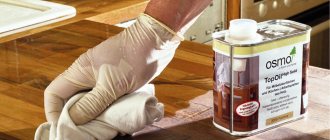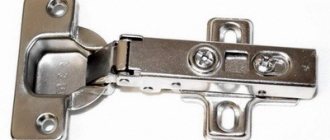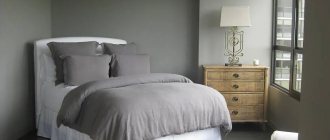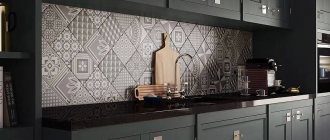The material used to repair and add freshness to wooden surfaces is furniture wax. The most expensive and high-quality wooden furniture loses its luster and beauty over time. The presence of children and pets in the house accelerates the aging process. To give your interior a fresh look, you can use special products. In this article we will look at how to properly use markers and wax for furniture restoration, and find out what types of this product are on the market.
How to use wax pencil for furniture
Some problems require a special solution. If the place for restoration is difficult to access or requires small tools, then a special wax pencil will be required. The question arises - where to buy such a pencil for furniture? You can purchase it in hardware stores and construction supermarkets, but if such outlets are not available in your locality, you can always use online stores.
How to use a furniture pencil? Before use, warm it with the warmth of your hand, and then rub it into the desired place without strong pressure.
Varieties
Today, you can find two types of furniture chalk on sale in hardware stores: solid and liquid. Each of them has a number of advantages and disadvantages, as well as different methods of use. To figure out which option to choose for your home, we suggest studying the summary table for the two types of crayons.
| Wax type | Purpose | Nuances of use | pros | Minuses |
| Soft | Repairing chips, cracks, scratches and other defects on horizontal wooden surfaces. Suitable for sealing marks from self-tapping screws and broken corners of the table top. | Apply with a spatula, after which the excess is removed with a felt disc. Ideal for filling large and deep surface voids. | Easy to use, available and sold in any store. | Not suitable for processing furniture that will subsequently be exposed to chemicals and ultraviolet radiation. |
| Solid | Repairing scratches and chips on doors, windows, and wooden interior items. | It is necessary to use solid furniture wax only in molten form. | High degree of protection against mechanical damage and temperature. | Difficult to find on sale, high cost, poor color palette. |
It is worth highlighting liquid wax separately, which is applied to the surface of the products using a small spatula. Its disadvantage is that it cannot be used on vertical planes. In consistency, it resembles drying oil - this mixture is achieved by the presence of synthetic substances and solvents. Its advantage is that the material penetrates holes of any diameter and depth, filling the gaps.
To use the solid type, a wax melter is used, which allows you to soften the structure of the substance, preparing it for work. This can also be achieved without special devices, for example, using a household hair dryer.
Today you can find the product on sale in several forms: wax crayons, as well as jars with a liquid composition. If wax will be used at home occasionally, it is better to take a wax pencil.
Soft
Solid
Pros and cons of using wax
The positive qualities of this product include the following:
- absorbs into the wood without remaining on the coating;
- repels moisture;
- allows you to change the shade of the product;
- removes wood defects well.
We recommend: Buying tractor tires. What do you need to know?
Depending on how you use furniture wax for repair or restoration, you can achieve a high-quality final effect. But it also has disadvantages. Among them we list the following:
- lower coating strength compared to varnish;
- negatively affected by ultraviolet radiation.
Application area
Contrary to the general belief that furniture wax is used only for furniture, its scope of application is much wider. Since the composition contains soft components and particles of recycled wood, it is regularly used for the restoration of other objects. Below is a list of areas where it is appropriate to use chalk:
- Processing of cabinet furniture - the intended purpose of crayons is furniture restoration. It is well suited for masking chips and cracks on surfaces of varying depths. When hiding defects, the material not only fills the resulting voids in the furniture, but additionally improves the properties of the wood. The advantage of wax when removing scratches is that it creates a pleasant shine that visually renews the furniture and imbues it with bright colors;
- Restoration of floor coverings - furniture wax is excellent for sealing cracks and cracks in wooden floor coverings. This applies to laminate as well as parquet products. During operation, the coating can wear out due to increased load on the floor. Having the specified substance at hand, you can restore laminate and parquet flooring in a matter of minutes without using the services of services. This move will help preserve the flooring material for a long time;
- Repair of decorative items - this includes the restoration of wooden paintings, boxes, wooden boxes, and decorative interior elements. Wax will be a solution if there are small children in the house who can turn the apartment upside down in a moment. By applying a small amount of the substance to objects, you can return them to their former appearance;
- Restoration of door frames and window frames - thanks to furniture wax, you can repair doors and windows yourself. The wood materials of these items accept filling with wax well. Now you don’t have to worry if the craftsman scratched the product when installing an expensive door.
As you can see, the scope of application of furniture wax is wide: it is mainly used for the restoration of various wood objects. It helps restore its former attractiveness and gives the surface certain properties.
For door
For decoration
For furniture
For floor
Choice of product
When purchasing wax, you need to follow a number of rules. First of all, the specific problem is taken into account: if a small scratch appears on the furniture, it is easier to remove it with a wax pencil; if there is a large chip, you should buy a paste-like (soft) material. Also, when selecting, carefully consider the shade of the product - it must match well the color of the product itself, otherwise it will stand out on it in the form of a spot.
Waxes for outdoor use must have powerful water-repellent properties and contain components that prevent them from fading from ultraviolet radiation. To restore a large surface or to completely renew furniture, it is worth buying wax in large containers, which is much more profitable.
How to choose furniture wax
The composition of different types of construction wax is practically the same. If one product uses olive oil and another uses linseed oil, this will not affect the quality of the restoration product.
When choosing, you should focus on the nature of the damage:
- Minor damage, large surface area to be treated - soft wax.
- Deep cracks and chips, “spot” restoration – hard wax pencil.
- Large area, horizontal and inclined surfaces - liquid wax.
Liquid wax is not suitable for doors and vertical walls. It is better to use a soft or hard mixture.
Types of furniture wax
The appearance of small defects is not a reason to change the furniture. Furniture wax will do an excellent job of masking imperfections on laminate, wood, varnished and polished solid surfaces. This restorative material can be liquid, hard or soft.
Wood wax can be hard, liquid or soft. Soft is used to restore light and dark surfaces with minor defects.
Soft types of wax are used to combat minor defects. Solid copes with more serious errors. It is thicker and denser, which allows it to fill and mask voids more effectively. Hard wax has better protective properties (after hardening), but needs to be warmed up before use.
Hard wax is thicker and denser, but requires preheating.
Soft wax restoration materials should not be used to restore surfaces exposed to intense exposure to aggressive chemicals and ultraviolet radiation.
Restoration with soft wax materials is appropriate only for furniture that is not exposed to aggressive environmental influences.
Technology of use
The substance must be used in accordance with the instructions, which are often supplied by the manufacturer. If this is not included in the package, you should use the tips below. Depending on the type of substance, the method of application will vary:
- Technology of working with soft wax. For the procedure you will need the product itself, a small spatula, felt material, and a construction knife with a sharp blade. Products are restored by filling voids with furniture wax. To do this, you need to scoop up the substance with a spatula and apply it to the scratch or hole. Excess wax is removed with a knife: this must be done carefully so as not to provoke the appearance of new scratches. Smoothing of the material occurs thanks to the plastic corner. At the final stage, the furniture is polished with felt cloth to ensure a uniform structure;
- How to apply hard furniture wax. To work, it must be melted using a lighter, soldering iron or gas torch. Once the material has heated up, it is necessary to reach room temperature for better adhesion to the furniture. The material is applied to the chip and leveled. If necessary, the surface of the furniture is sanded.
It happens that during the repair process all the wax was not removed from the surface. To remove the wax from the product, you need to use ice cubes. To do this, take several pieces of ice, put them in a bag and remove the wax from the furniture by applying cold ice to the stains. The wax will harden and cool, after which it can be carefully removed using improvised means.
If the product is not wiped off, you can use solvents that are suitable for wooden surfaces. First you need to check the composition on an inconspicuous place of the furniture, and then start cleaning. Furniture wax is a universal product for the restoration and repair of furniture, floor coverings, doors, windows and other wooden surfaces: it will help restore the former beauty of all of these items.
Cleaning the surface
Melt the wax if required
Apply to scratches
How to properly use wax to repair furniture
- Prepare the work area. On oak, walnut, ash and other solid surfaces without paintwork – just remove dust. If the area to be treated is varnished, remove it with a solvent.
- When restoring with any type of wax, the composition must be soaked and dried. Time – at least 50-60 minutes. Excess mixture is removed with a knife or a piece of plastic, and the areas where furniture has been restored are polished with a napkin or a clean piece of soft cloth.
After waxing, the furniture must be polished with a napkin or soft cloth.
Wax pencils (soft and hard)
Wax pencils are suitable for restoring furniture with a small surface area to be treated. The consistency depends on the nature of the defects.
The consistency of wax pencils for furniture is selected based on the defects present. For deep cracks, chips and scratches, it is better to choose a hard pencil. It is suitable for wooden window frames on the street side, and for restoring interior elements that are regularly exposed to sunlight. It has good plasticity and adhesion.
Hard wax pencils are suitable for deep cracks, chips and scratches on furniture. Hard wax must be melted before application. To do this, you can use a soldering iron, a special wax melter, or even a household hair dryer if it is capable of bringing the temperature of the material to 95 degrees. This is exactly what is needed to melt solid furniture wax.
Before using hard wax pencils, they need to be melted.
Liquid
Liquid. Its thickness resembles drying oil. Suitable for repairing horizontal and inclined surfaces. You can apply it with a spatula, a piece of plastic, or even a clean cloth. Large selection of shades.
You can apply liquid wax to furniture using a brush or soft cloth. The choice of mixture mainly depends on the nature and area of damage. And, of course, it is better to buy products from well-known manufacturers. Because at home you are unlikely to be able to check furniture wax for the presence or absence of toxic additives.
Self-production
There is a simple recipe for making furniture wax with your own hands. You need to take 100 g of beeswax, grind it and melt it in a water bath. Add 50 g of turpentine and continue heating the mixture until smooth. Add 25 g of rosin and an arbitrary amount of propolis there (to give the product a pleasant smell). After the mixture has cooled, you can lubricate the furniture and polish it well with a rag.
Homemade wax is not inferior in quality to store-bought wax. With its help, you can easily restore the appearance of old, damaged furniture, seriously saving on the services of craftsmen!











